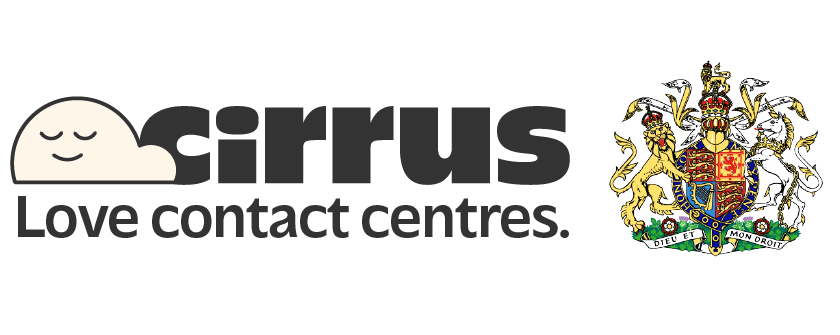What is a CX platform?
A CX platform is a centralised system used by businesses to manage and improve the entire customer experience. It integrates various tools for communication, support, automation, and analytics into a single platform. Unlike basic helpdesk software, a CX platform focuses on the entire customer journey, supporting personalised interactions and real-time decision-making across all digital channels.
It connects departments, systems, and data to deliver exceptional customer experiences. Teams can track customer behaviour, respond to customer inquiries, and resolve issues quickly through coordinated workflows. Whether interacting via voice, chat, social media, or email, customers benefit from a consistent experience without needing to repeat information.
Why CX platforms are important
Today’s customer expectations go far beyond timely responses. People now look for relevance, empathy, and fluidity in their experiences. Organisations face increasing pressure to provide personalised service while also scaling support operations. A CX platform addresses this challenge by unifying tools that improve both the customer relationship and internal operations.
For example, businesses can:
- Capture real-time feedback and adjust service strategies
- Monitor customer satisfaction scores and Customer Effort Score
- Identify the preferred channel for each customer
- Enable self-service through knowledge bases and chatbots
- Automate repetitive tasks and reduce manual work for customer service agents
In practice, many contact centres rely on cloud-based platforms with strong integrations and analytics to ensure both agent performance and customer success.
Key features of a CX platform
A high-performing customer experience platform typically includes:
Omni-channel communication
Communication is consolidated across multiple channels, such as voice, email, chat, SMS, and social media. Agents gain access to unified customer profiles, enabling them to deliver personalised responses.
To explore how this works across sectors, take a look at this omni-channel setup that improves contact efficiency.
Automation and workflows
CX platforms often include CX automation platform features like AI-driven routing, chatbots, and task automation. These systems manage common inquiries, send status updates, and handle survey tool features such as automatic feedback collection.
Analytics and reporting
The platform provides data-driven decisions through dashboards showing volumes, resolution times, and real-time insights into service trends. This leads to informed decisions about agent training, process gaps, or experience redesign.
Customer feedback tools
Most CX systems support tools for collecting, analysing, and acting on feedback. Customer surveys, sentiment tracking, and review analysis help improve the entire customer lifecycle.
Secure data handling
Security and compliance are necessary, especially in industries like government and education. Many platforms support secure payment handling, data encryption, and role-based access to meet regulatory needs.
For full integration of secure systems and compliant operations, review this secure payments capability.
What is a CX automation platform?
A CX automation platform uses software to manage routine or rule-based customer service processes. These include handling FAQs, routing requests to the right contact centre agents, and processing basic tasks like password resets or appointment bookings.
Benefits include:
- Faster resolutions for tedious tasks
- Reduced load on support agents
- Higher customer satisfaction scores
- Lower operational costs
Automation works alongside human agents, not in place of them. While chatbots can handle common issues, complex customer cases are escalated to trained professionals.
CX platforms vs CRM systems
A CRM focuses on storing and managing customer data, such as names, purchase history, contact details. A CX platform, by contrast, uses that data to improve customer communications, support, and relationship management in real time.
It connects with CRMs to provide context for service teams, turning static records into actionable interactions. For instance, by integrating with a CRM system, a CX platform can automatically show recent interactions, buying history, or issues when a customer reaches out.
Benefits across business types
Whether for sales support or technical help, CX platforms are adaptable. Here’s how they serve different sectors:
- Retail organisations use platforms to drive personalised customer experiences, manage service peaks, and send promotions at the right time
- Housing providers track tenant communications and automate repair status updates
- Higher education teams use platforms to guide students through admissions and course selection
- Government and healthcare providers depend on platforms for accessibility and regulated data handling
- BPOs use platforms to serve multiple clients while managing KPIs per account
- Not-for-profits rely on platforms to engage donors and volunteers with minimal admin work
Why cloud-based CX platforms are preferred
Cloud systems eliminate the need for physical infrastructure. Businesses can scale faster and access new features automatically.
Key benefits:
- No server maintenance or software installs
- Easier onboarding for new agents
- Better support for hybrid and remote workforces
- Quicker updates with advanced features
- Integration with tools like workforce optimisation and collaboration apps such as Microsoft Teams
Cloud platforms are also more reliable in terms of business continuity, disaster recovery, and access from multiple locations.
Data and insights: powering smarter decisions
By capturing service metrics and feedback across all channels, CX platforms provide a comprehensive view of customer health. Businesses can act on:
- Insights into customer emotions
- Insights into customer behaviour
- Peak interaction times and volume of calls
- Pain points during the customer journey stages
- Trends in customer trust, loyalty, and customer lifetime
These insights power continuous improvement and smarter customer experience strategies. Managers can allocate resources better, launch multi-channel campaigns, and refine service paths based on what works.
To see how AI and insight tools can support agents, explore features of an ideal AI-powered agent assistant.
Personalisation at scale
With more data and smarter segmentation, platforms now support personalised experiences at a much larger scale.
This includes:
- Targeted responses based on customer type
- Tailored helpdesk features for VIP or frequent users
- Relevant suggestions using predictive analytics
- Marketing touchpoints adjusted to the entire customer journey
When done right, these strategies help build loyal customers and encourage positive customer conversations that lead to long-term value.
Frequently asked questions
What is a CX platform?
It’s a unified system used by businesses to manage all parts of the customer experience, from initial contact to long-term retention. It includes communication, analytics, automation, and feedback tools.
How does a CX platform improve service?
It helps reduce delays, provides real-time context, supports personalisation, and enables teams to work efficiently using data and automation.
How does it compare to a CRM?
While a CRM stores customer data, a CX platform utilises that data to enhance how businesses communicate, support, and serve customers in real-time.
Start transforming your customer experience
For any organisation looking to improve modern customer service, unify operations, and make sense of growing customer data, investing in a CX platform is a practical move.
From better service improvements to stronger customer relationships, the right system turns disconnected interactions into a cohesive, intelligent journey.
Start exploring how a CX platform could work in your environment by requesting a product walkthrough.
Your Contact Centre, Your Way
This is about you. Your customers, your team, and the service you want to deliver. If you’re ready to take your contact centre from good to extraordinary, get in touch today.


